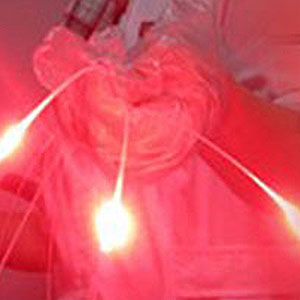
Photodynamic therapy (PDT) is a new technology that uses photodynamic effect in diagnosis and treatment. This therapy is based on the photodynamic effect. The photodynamic effect is a photosensitized reaction accompanied by the biological effects and getting the molecular oxygen involved. In the process of photodynamic effect, laser radiation at specific wave length makes the photosensitizer absorbed by the tissue become excited, and then the transfer of energy from the excited photosensitizer produces the highly reactive singlet oxygen. The singlet oxygen can react with neighboring biomacromolecule to generate oxidation reaction, which results in cytotoxic effects, leading to the damage and death of the cell. Many hospitals have applied the photodynamic therapy in the diagnosis and treatment for cancer so far. Additionally, many organizations and institutes are studying this therapy.
The Indications of Photodynamic Therapy:
It is applied to the orificial, cavitary, body-surface tumors and abnormal proliferation
Major indications: esophageal cancer, gastric cardia cancer, bronchogenic carcinoma, bladder cancer and nasopharyngeal cancer and etc…
Other indications: gastric cancer, oral cancer, tongue cancer, laryngeal cancer, bronchial cancer, lung cancer, bile duct cancer, liver cancer, cervical cancer, colorectal cancer, skin cancer, breast cancer, brain cancer, vaginal cancer, penile cancer, encephalic glioma, and etc…
The photodynamic therapy can also indicate to the following types of skin cancer: basal-cell carcinoma, squamous cell carcinoma, malignant melanoma, Bowen's disease, Paget's disease and carcinoma in situ and etc...
This therapy is especially suitable for the senior patients, those with contraindications to surgery, chemotherapy and radiotherapy, and patients with relapse after surgery or radiotherapy.



